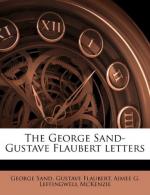|
This section contains 10,858 words (approx. 37 pages at 300 words per page) |

|
SOURCE: "Articulating an Ars Poetica," in George Sand: Writing for Her Life, Rutgers University Press, 1991, pp. 221-41.
In the following extract, Naginski argues that although Sand's contemporaries did not always see her as a serious writer, Sand had a well-developed and clearly articulated poetics, which emphasized the ideal over the real and the rural over the urban and which was founded upon an androgynous vision that revolted against socially sanctioned gender inequality.
The great French writers of the Romantic generation—Hugo, Balzac, Michelet, Dumas—had at least one trait in common: the immensity of their literary output. The "vast nineteenth century," as Hugo called it, created a myth of the Gargantuan male writer, whose voluminous creation was synonymous with the greatness of his inspiration and the magnitude of his writing. To these Frenchmen, "ces formidables bûcherons" ("those masterful woodcutters") to use André Fermigier's words in his excellent...
|
This section contains 10,858 words (approx. 37 pages at 300 words per page) |

|


